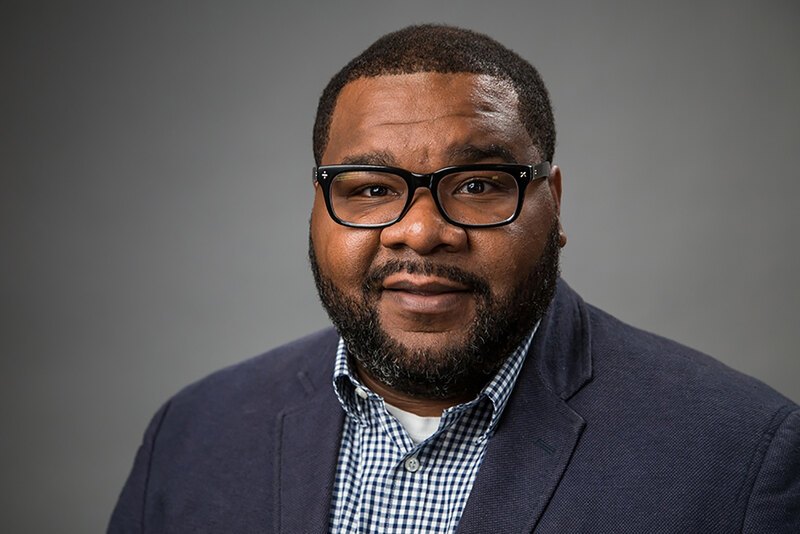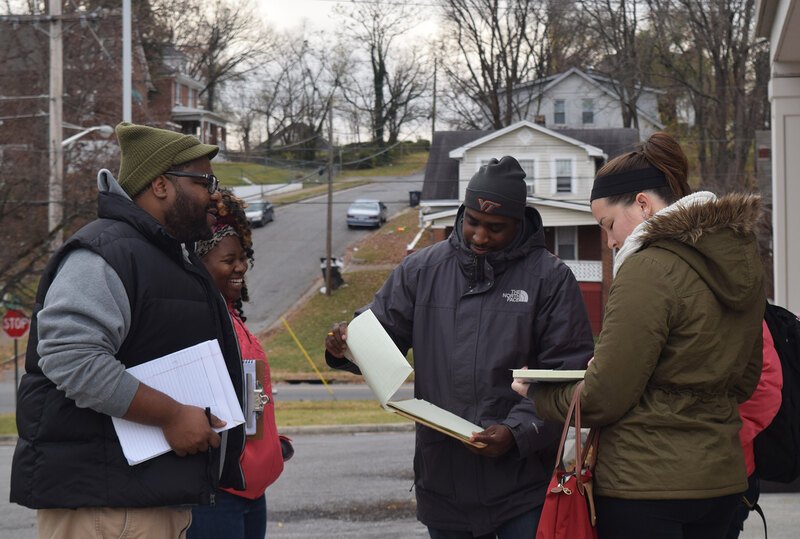Perspectives: C.L. Bohannon

JANUARY 10, 2019
Dr. C.L. Bohannon, ASLA is an Assistant Professor of Landscape Architecture at Virginia Tech and president of the Virginia Chapter of ASLA. Bohannon teaches and studies the intersection of community engagement and design education with a focus on social and environmental justice.
What drew you to landscape architecture?
I grew up around the design professions. My late father was an architect in Memphis, Tennessee and I fondly remember being in his office as a child using triangles, scales, and tracing paper to draw and be creative. Using those instruments led to my interest in mechanical drawing, and later, free-hand drawing. So, for as long as I can remember, I’ve been into drawing the environment around me.
My interest in landscape architecture came from one of my father’s colleagues, John Jackson, a landscape architect with an office in Memphis. John and my father had a number of joint projects. I remember visiting John’s office and being in awe by the work pinned up on his walls. He had a variety of work displayed, ranging from community master plans and regional work to park and green space designs. I had not thought of a profession that was responsible for the design and management of green spaces before seeing his work. Then, in my junior year of high school, I attended a design camp at the University of Arkansas that focused on landscape architecture. It was that week of design camp that really opened my eyes to what landscape architecture was as a field and as a potential career choice. I am not trying to make this sound poetic or anything like that, but the first landscape architect I ever met was John Jackson--a black landscape architect, and his impression on me, alongside my dad’s influence still pushes me to be determined and to be unapologetically me in my profession.
What is driving you professionally right now?
Again, I go back to growing up in Memphis and the delta region of Arkansas, Tennessee, and Mississippi. I grew up in a place that is rich in terms of its cultural landscape, but it took design education in landscape architecture (that started at the University of Arkansas) to provide me a lens to read the landscape that I thought I knew so well. My father’s office, at one point, was in the old cotton warehouse building at the intersection of Beale Street and Riverside Drive. I remember seeing the Mississippi River flowing south, I remember the floodwaters that would rise so high that you could barely see Mud Island. I also remember being a few blocks from the site of MLK’s assassination and not very far from where the Workers’ March started in 1968. These are places that, at one point in my life, I took for granted. But, now as a landscape architect, I see the world differently; I understand the world differently, and the knowledge that I’ve gained through landscape architecture leads me to ask different questions to explore uneven geographies, landscapes of imposition, and the power of stories and narratives in community identity.
Professionally, as I’ve moved from private practice and into academia, I am driven by exploring how landscape architecture can be used to explore and address uneven geographies that many of our communities face. Much like the delta, Appalachian communities also face environmental and social inequalities that have disproportionate effects. Now, my work primarily focuses on community engaged design projects that address inequalities and self-identified projects, such as food security, park allocation, and community identity.
What challenges is landscape architecture allowing you to address right now?
Right now, my work centers on the methods and pedagogy of community engagement. I believe as landscape architects we are instrumental in empowering communities to take a more substantive role in design and policy decisions that impact the places where people live. I know that building and sustaining trust with communities that I work with in Appalachia is critical. I don’t feel as if one can give people voice; but I do feel that community engagement, as a process within landscape architecture, carries with it the possibility of empowering citizens and communities to address issues they have identified as problematic in their lived experience related to the built environment.
Design is a political act. Teaching allows me to unpack the ways in which design is political, from its conception to its implementation, with students and communities. Through my research, I question the relationship between inequalities such as food insecurity and disparities in health outcomes. All of this is contextualized within design/planning decisions that encourage or allow (or in many cases discourage or disallow) the built environment to evolve. For example, I am doing research on the lasting effects of the construction of I-581 in Roanoke, Virginia. I-581 is an urban renewal era infrastructure project that devastated African-American communities in the city. These affected communities are now facing some of the worst environmental inequalities in Roanoke.
Another challenge that I am addressing is access to the profession. For many, it may seem that landscape architecture or allied design/planning professions are unattainable. For others, landscape architecture remains an unknown. I firmly believe that landscape architects doing more work with community members will enable greater access to the profession. I take every opportunity that I get to talk with young people about my profession and how they can use design to cultivate positive change in their communities.

What challenge would you give emerging leaders?
First, I challenge emerging leaders to be our own best advocates for the profession. When I say our “best advocate,” I would like to see more landscape architects practicing in communities and thereby illustrating how our profession can have positive and sustainable impacts on society. In the same spirit, I challenge leaders in our profession to be more active and intentional in increasing diversity in landscape architecture. As we know, landscape architecture lies at the intersection of the natural/built environments and people; however, the people side of this equation and all of the power dynamics that are a part of it requires much more attention. Within the profession, we need to be proactive in our introduction of the field to others, as well as in the recruitment of a diverse and inclusive workforce. Moreover, it’s imperative that we dedicate attention to mentoring and retaining designers who are actively working to progress the profession in socially and environmentally beneficial ways. This requires us to be present in communities that are currently underrepresented in our professional ranks.
Finally, I challenge our emerging leaders to redefine the profession in a way that advances the possible ways in which landscape architects can practice in a progressive manner. Particularly in the United States, demographics are changing and our profession needs to be forward-looking in terms of issues such as access to green space, mobility, and provision of healthy foods and ecosystems. Landscape architecture can and should be at the forefront to address those challenges.
Where do you think the profession needs to go from here?
I think there are two areas our profession needs to grow. First, as professionals, we need to do a much better job of cultivating the next generation of landscape architects and to shape the profession in a way that it can have a more positive impact on society. We need to reach out to children early to introduce them to our profession; waiting until high school to introduce students to landscape architecture means that we are behind the curve. We need to show the relevance of what designers do for communities, and what the potential of landscape architecture is for regions.
Secondly, designers need to continue to create space for alternative modes of practice as we move further into the 21st century. We can pursue more projects that directly demonstrate landscape architecture’s potential to respond to some of the greatest social and environmental pressures of our time. Issues such as social and spatial inequality, climate change, food sovereignty, and health disparities are solidly within the wheelhouse of landscape architecture. I firmly believe one of the ways for our profession to reassert itself as a problem solving profession, rather than a profession dedicated solely to the aesthetic dimension, is to engage with communities in a more concerted way, utilizing both local expert knowledge and the design and planning knowledge landscape architects bring to design, planning, and policy discussions. I think as we move forward, community engaged design will be a platform for landscape architects and community members to collaborate for positive change.
LAF's Perspectives interview series showcases landscape architects from diverse backgrounds discussing how they came to the profession and where they see it heading. Any opinions expressed in this interview belong solely to the author. Their inclusion in this article does not reflect endorsement by LAF.











